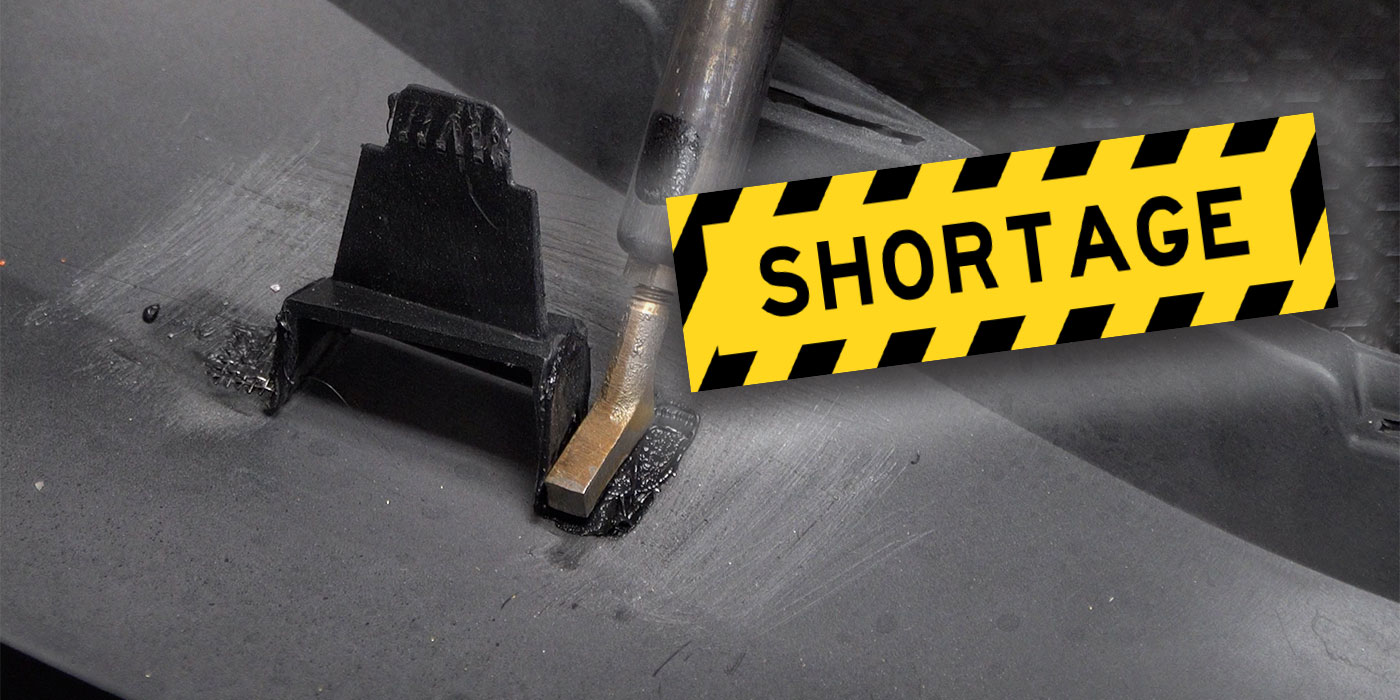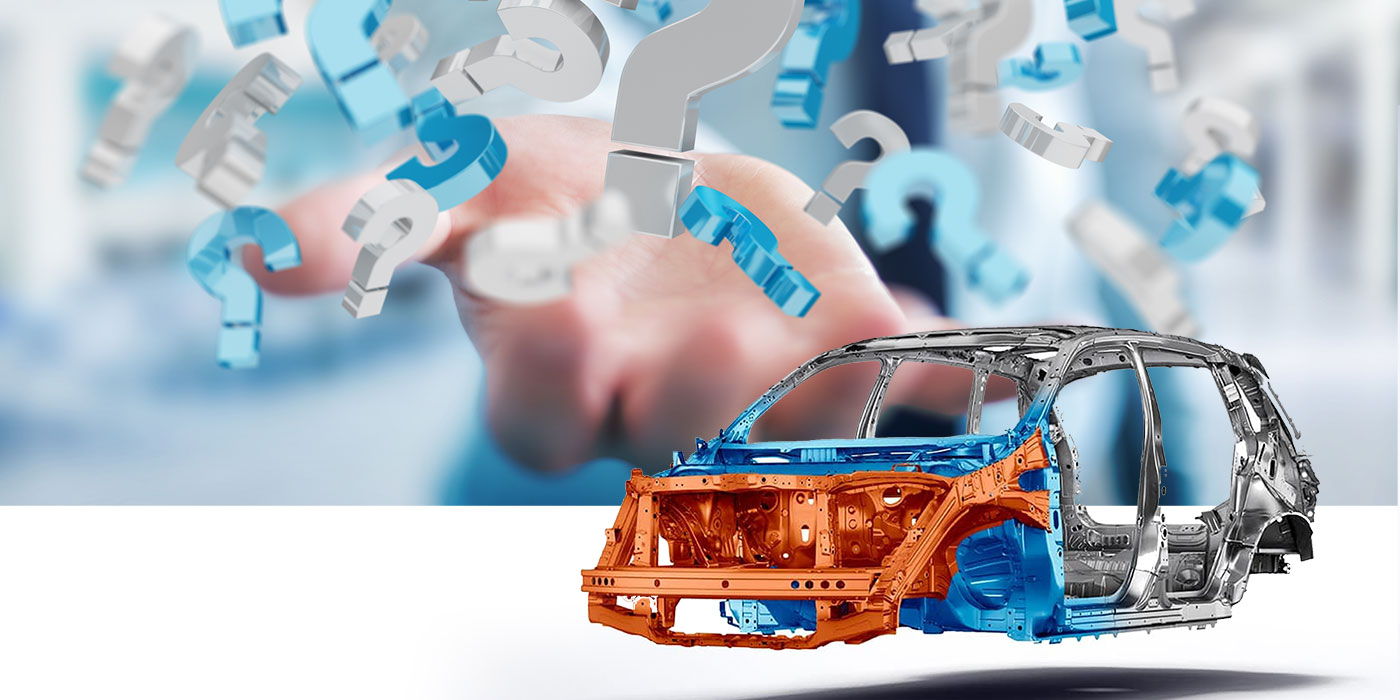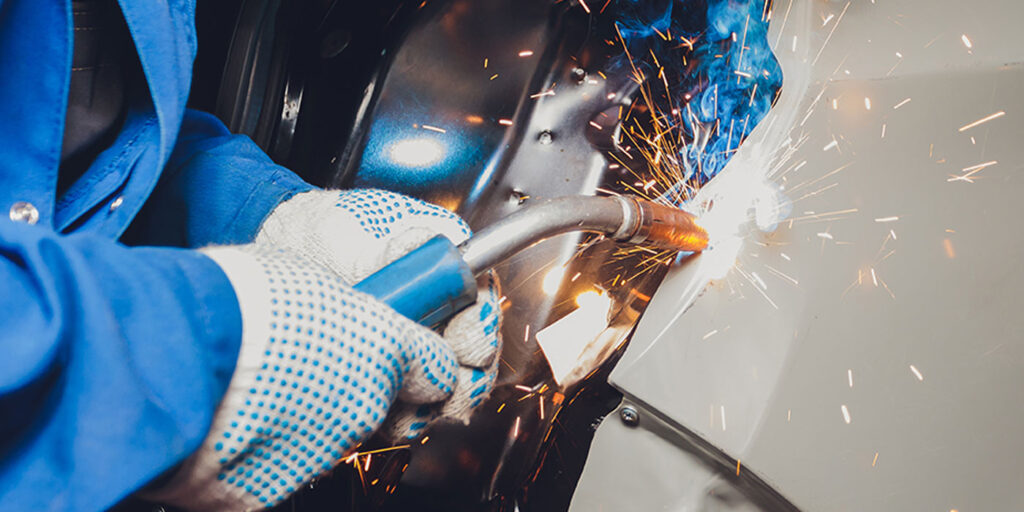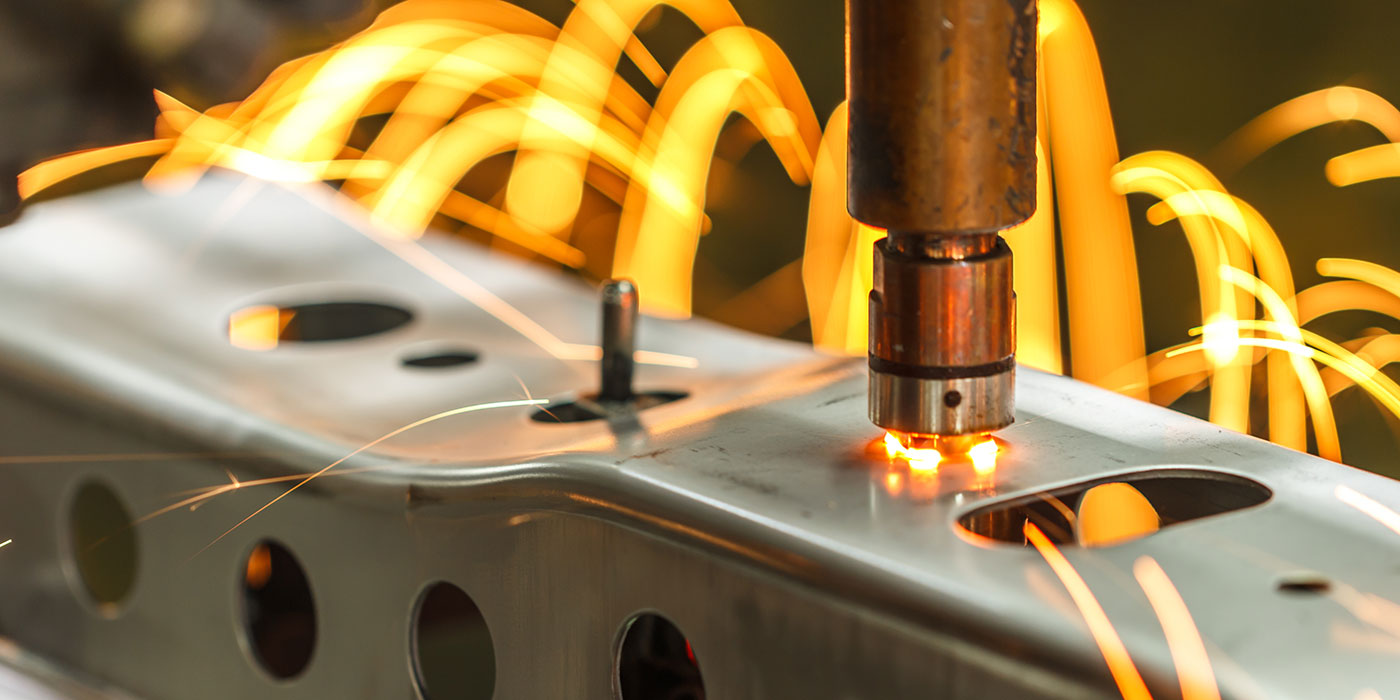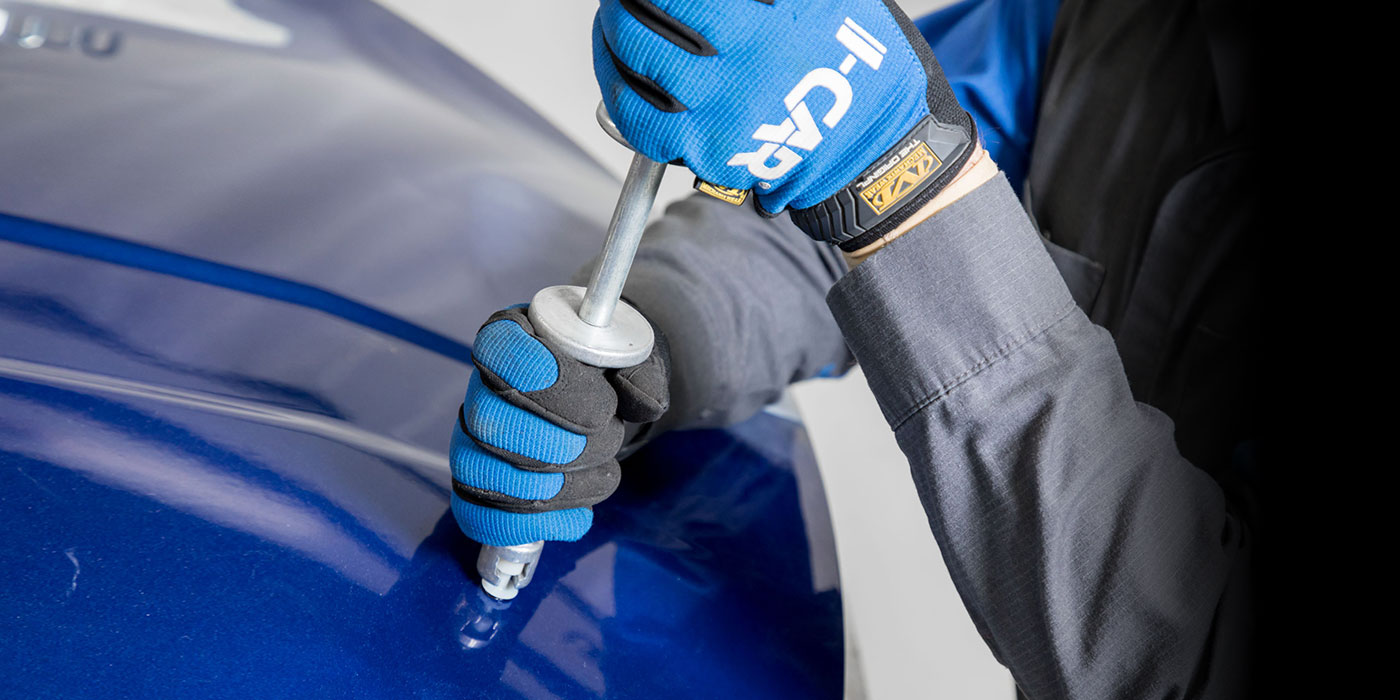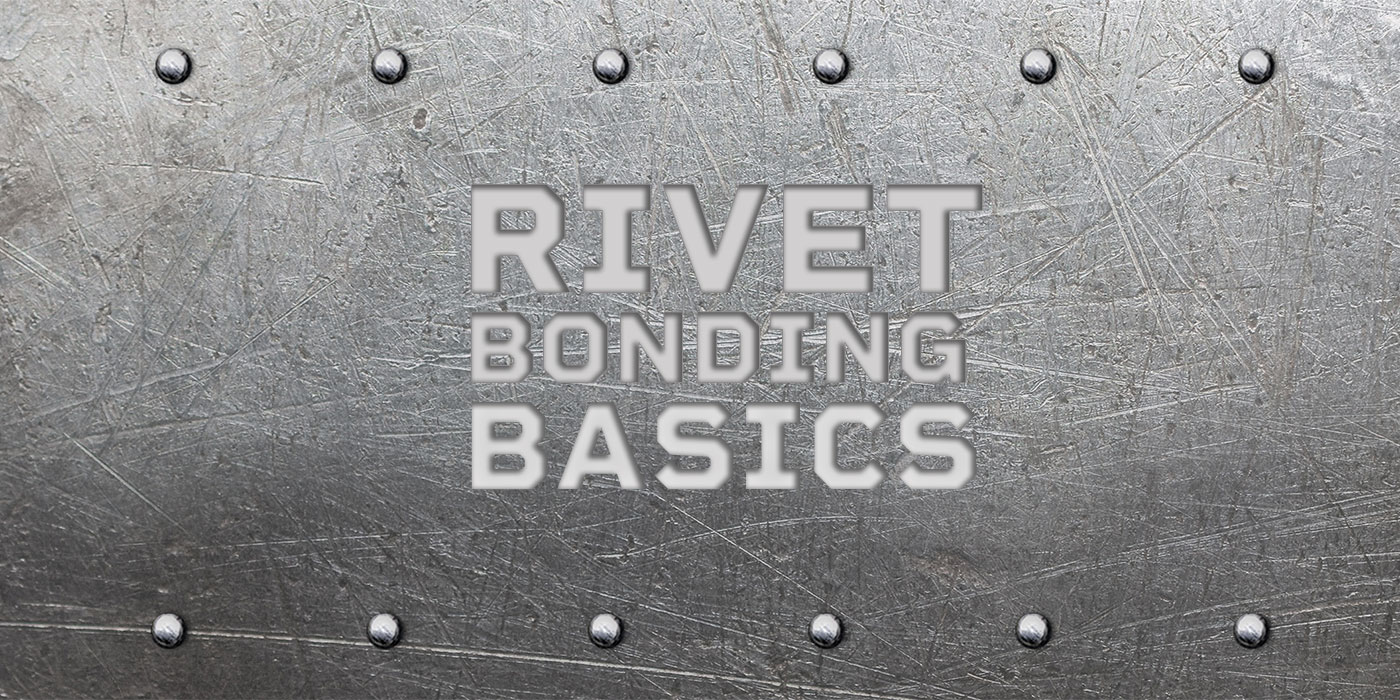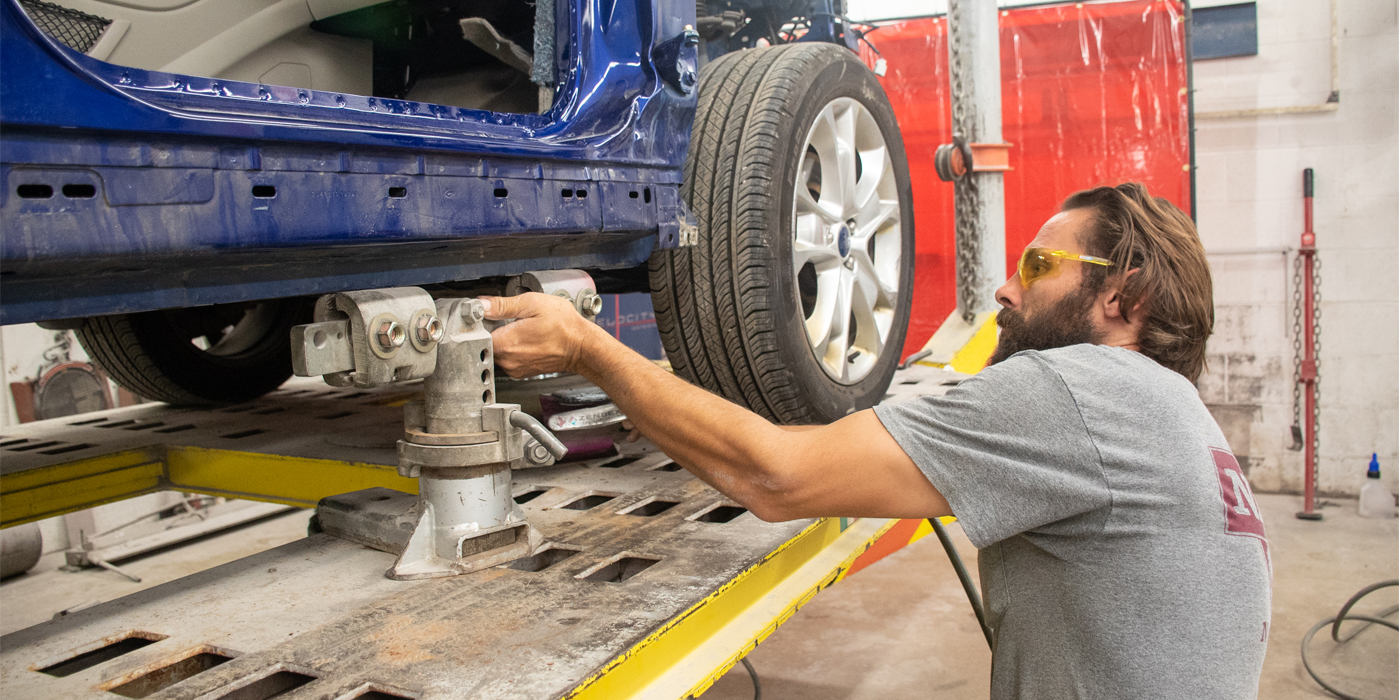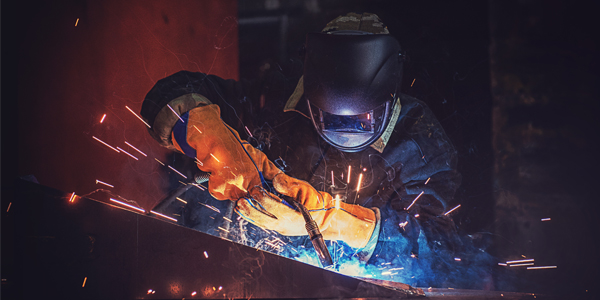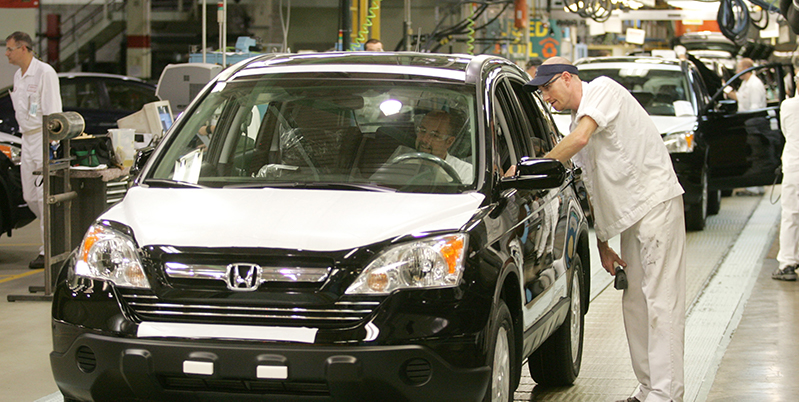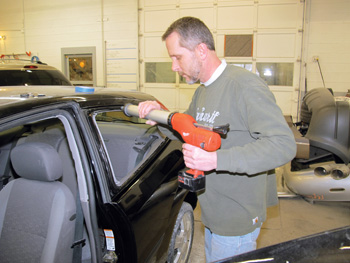 I once came across a saying that really stuck in my head: “In business, it’s not the biggest or strongest that survive. It’s the companies that adapt to change.”
I once came across a saying that really stuck in my head: “In business, it’s not the biggest or strongest that survive. It’s the companies that adapt to change.”
With today’s economy and the need for leaner processes in the collision repair business, doing more “in-house” procedures has become a necessary adaptation to improving cycle time and increasing sales.
The Past
Years ago, there used to be two separate shops: the frame shop and the body shop. In some areas today, that’s still the case. These two different businesses worked together for many years. After awhile, body shops began to realize that investing in the equipment and training to do their own frame repair was a good idea.
We see these types of business adaptations still occurring today, with body shops doing more tire and wheel and mechanical procedures. Offering a diverse array of services can often be the difference between growing your business or becoming stagnant.
New Vehicle Designs
Preparing to adapt to the new vehicle designs and repair procedures coming out is in the best interest of any shop. Just as when shops started using frame equipment, there’s always a learning curve.
Take adhesive bonding, for example. What makes this additional in-house adaptation so viable is that adhesives have been used for years in collision repair. The need for adhesive bonding is increasing with every new model year, and much of the same adhesive technology is used in the removal and installation of auto glass. Many new vehicles now incorporate the same adhesive material used in auto glass replacement for bonding metal roof panels during construction, along with the panoramic glass roof. So more and more shops are going to see the increasing need to replace adhesively bonded glass and metal body panels in their shops.
Complicating Factors
Saying that body shops should get into the glass replacement business sounds simple, but there are some complicating factors.
One major hurdle is getting technician buy-in. Most techs are unfamiliar or a little afraid of working with adhesive-bonded glass, but this attitude is changing slowly. Many repairs that involve weld bonding or rivet bonding are making techs more familiar with these types of procedures, so with each successful repair, the stigma of working with glass starts to lessen. Also, the R&I aspect of repair and painting has also given glass a lot more exposure than before. All of these trends make bringing glass in-house and marketing it to your customers closer to reality.
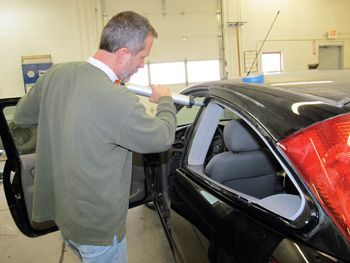 I believe that doing auto glass replacement in body shops today is a must in our current economy. However, you must do the proper research, develop an understanding of how the glass industry works and learn the proper procedures. Those who don’t take the time to learn will struggle.
I believe that doing auto glass replacement in body shops today is a must in our current economy. However, you must do the proper research, develop an understanding of how the glass industry works and learn the proper procedures. Those who don’t take the time to learn will struggle.
Level of Involvement
Whether a shop just wants to handle their own in-house glass, market for replacement to the public or add a mobile service, it must determine the level it wants to be at.
For simplicity’s sake, I’ll address this from the perspective of a shop that just wants to do their own collision glass for their own drive-in customer. If a shop wanted to also add mobile or expand, the issues involved would grow dramatically.
First come some simple truths:
- The auto glass industry operates at lightning speed. People want it now! From the phone call to completion of the job, time is critical. Logistics and getting parts is one of the first things to look at. It’s similar to getting body parts, but time is more critical as the guy down the street will do it today, not tomorrow.
- Competitive pricing will drive you crazy. Prices can change every day due to competition.
- Not everyone can replace glass correctly and consistently. I know this is odd, but not every tech has the same skills and quality of work.
- Training is critical. Just as training is critical to success in collision repair, so too is training in the use of tools and adhesives for success in glass.
Two Types
There are two types of glass to consider when contemplating doing glass work:
Movable glass. Body shop techs are fairly well-equipped to handle most of the movable glass issues. This is already being done by techs during the day-to-day work process. They’re already comfortable with it. In many cases, regulators need to be replaced too, which is another easy task for the body tech.
Stationary glass. Stationary glass or adhesively bonded glass is different, as special tools may be required for removal. There are many different tools available. Although some tools are expensive, there is a relatively low cost of return. If you’re after mobile glass, then there are other costs to consider.
Stationary glass is broken down into two categories: windshields and everything else, such as quarter glass, vent glass and back glass.
Body shops currently R&I large quantities of glass. Many shops sublet to local glass companies rather than deal with R&I. R&I procedures are considered one of the most labor intensive parts of the job, and they’re also considered one of the most difficult.
Trying to remove glass without damaging it and, at the same time, limiting damage to the vehicle can be a challenge. Many glass parts sometimes get damaged, and damage to vehicles sometimes occurs as well. This is the same with any repair process. The learning curve is experience. The more a person works with tools, the better they become. This is why some shops will have one person practice and train, which keeps their skills fresh and improving.
If the shop is a high-volume facility, more than one tech may be needed. In the removal of many glass parts, interior components may need to be removed. Never assume this is an included operation – always check the P-pages.
When customers have broken glass, the replacement is slightly easier as there is less chance or worry of damaging glass. Once the broken glass is trimmed from the vehicle and cleaned up, the procedure becomes pretty straightforward. The glass being broken also allows easier access with less time needed to remove interior components – if that’s needed at all.
Windshields
Windshields, on the other hand, are more challenging. The R&I can be very labor intensive and involve a few challenging variables. Quality of fit of glass and moldings becomes an issue, as customers are more critical of the final appearance after a windshield installation. Then, of course, there is the liability. Windshields play a part in crash testing to meet Federal Motor Vehicle Safety Standards. Thus, the installation must be done correctly in order for the car to perform the same in a crash.
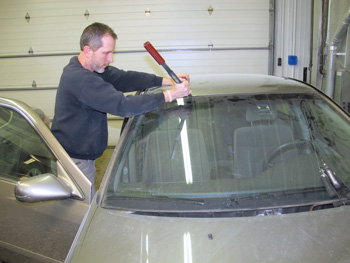 Installing windshields requires training in the use of adhesives and tools. Due to all the variations in moldings and glass, installation experience is a must to be efficient and proficient. Replacing a windshield without proper training can lead to warranty issues, a very unhappy customer and a dangerous situation.
Installing windshields requires training in the use of adhesives and tools. Due to all the variations in moldings and glass, installation experience is a must to be efficient and proficient. Replacing a windshield without proper training can lead to warranty issues, a very unhappy customer and a dangerous situation.
Training and Practice
Training and practice are keys to becoming proficient at installing glass. A shop may choose to train someone on the R&I of non-structural glass and replacement. Replacing windshields may require more extensive training. Some shops hire glass techs and crosstrain them in a new profession, or they may feel another employee is the best route. Some will have current techs work with all non-structural glass parts but sublet out all windshield work. It’s the shop’s choice as to what level it wants to perform.
Establishing office procedures is also a must if you’re going to do more glass work. These procedures will allow a customer to call the shop and quickly get a quote as to the cost or approval if insurance is involved. Doing this quickly and systematically will allow the customer to drive in and the shop to be ready. If mobile installations are being performed, office procedures will help to schedule routes for techs without a lot of downtime. If these activities aren’t done right away and you have to call the customer back later, the next company in the phone book will get the job.
Other Aspects
Billing procedures, marketing and working with glass networks is material for a whole other article. Suffice it to say that you’ll learn much as you go.
This was a brief look at the things that should be considered by a shop looking to boost the amount of glass work they do in-house.
I advise taking the I-CAR courses GLA01 and GLA02 for glass. If you desire to do windshield replacement, I would suggest visiting the Auto Glass Replacement Standards website.
The Importance of Quality Glass and Training
Glass these days is getting sophisticated. That’s why it’s important to know what kind of glass you’re installing, particularly when it comes to windshields, says Rod Watson, technical services manager for Carlex, a manufacturer and distributor of OE and aftermarket service glass.
Watson uses the example of acoustic glass, which consists of a layer of glass with acoustic properties sandwiched between two pieces of polyvinyl butyral. This glass works as a sound deadener, decreasing the amount of noise coming through the windshield at key frequencies (1,500 to 6,000 Hz) of the human ear.
“Sometimes if you buy a generic windshield instead of an OE windshield, you don’t know if you’re really getting acoustic vinyl,” says Watson. “In many cases, you’re not getting it, especially with the offshore stuff. That’s why we like to encourage people to use OE replacement parts because you’re getting what came with your vehicle.”
Watson also cited windshields with rain sensors and lane departure sensors mounted to them as more evidence of how high tech glass has gotten. This, he says, has put a premium on making sure you order the right part and receive the proper training to install this glass.
“Installers need to understand the importance of doing the job right, especially on windshields because that could be a very big safety issue,” says Watson. “If windshields aren’t installed right, they can pop out in an accident, in which case the occupants of the vehicle would fly through the opening, which obviously increases the likelihood of a fatality.”
Mitch Becker is a technical instructor for ABRA Auto Body & Glass. Contact him at (763) 585-6411 or [email protected].



